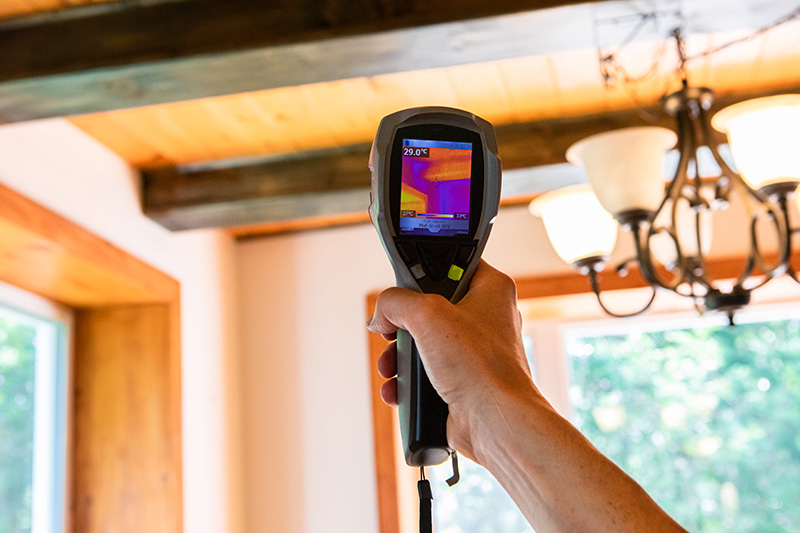Americans spend around 90% of their time indoors. Consequently, you should ensure that the space you spend over half of your life in is safe. With so many diseases spreading due to poor air circulation, it is time to become more conscious about your choices regarding the quality of your environment. Below is an overview of all you need to know about IAQ, including how to monitor and improve it.
Understanding Indoor Air Quality
Indoor air quality is the quality of air within the buildings you occupy, such as your home and workplace, and how it affects the comfort and health of those within and around the structures. You might think of mold as the most common culprit, given that approximately 47% of American homes have mold. However, there are many other pollutants, some of which you might innocently overlook.
For instance, you release carbon monoxide into the air whenever you use your fireplace or gas range. Moreover, that breath-taking rug, furniture, or flooring you installed could have formaldehyde, a chemical believed to be a human carcinogen. You probably spray pesticides to eliminate bugs in the house, but even these chemicals pollute your indoor environment. Additionally, the cigarette you are craving produces tobacco smoke, which contains carcinogens. Even the cleaning products you use contain volatile organic compounds, which, when released into the air, have health impacts.
Some of the adverse health effects poor IAQ causes include respiratory diseases such as asthma. Reportedly, exposing a child to mold during the first year of life significantly increases the chances of developing childhood asthma. Exposure also leads to immediate reactions, including dizziness, irritation of the nose, throat, and eyes, and headaches. Long-term effects occur with repeated exposure, and they comprise cancer and heart disease. Some exposures are fatal, and the World Health Organization estimates 3.2 million premature deaths every year resulting from illnesses related to household air pollution.
Testing Indoor Air Quality
It is difficult to tell the precise pollutants lurking in your indoor environment, but you can identify places you feel might be vulnerable. Therefore, here are a few steps to take to test IAQ.
1. Preparation
Once you identify the suspicious areas, buy kits or tools to monitor the specific pollutants.
Some of the recommended tools and what they measure include:
- VOC meter- volatile organic compounds
- SO2 Meter- Sulphur dioxide levels
- CO2 Meter- Carbon Dioxide levels
- Indoor air testing kit- analyses dust, mold, bacteria carcinogenic fibers, and dander
- Swab tests-sample mold and bacteria
- Thermo-hygrometer-humidity
2. Test
Conduct the test by carefully following the kit manual. While some demand leaving the tool for some time, others recommend taking the readings immediately. However, avoid placing the testing kit immediately after any activity that might skew the results.
3. Analyze Results
Most DIY kits include instructions for analyzing the readings’ results. If yours does not, you can browse the web for help.
4. Act
Now that you know which indoor pollutants are present, take the proper measures to mitigate them.
By regularly monitoring and testing the IAQ, you cushion yourself against the adverse health effects of poor air quality. In the working environment, you also comply with the health standards set. Additionally, you save on energy costs because your HVAC becomes more efficient.
Interpreting Results
The air quality index (AQI) scale measures air pollution on a scale of 0-500 using color-coded categories. From 0-50, it is green, which means good air quality. Yellow is from 51-100, translating to moderately good quality, while 101 to 150 is orange, which shows unhealthy air quality, especially for sensitive people. From 151 to 200 is red, 201 to 300 is purple, and maroon is for values above 300. The higher the values, the more danger it signals. Regarding mold tests, a higher spore count signifies loads of mold.
Improving Indoor Air Quality
If mold is present indoors, you can control dampness using dehumidifiers, ensuring the humidity is below 60%. Moreover, increasing ventilation by regularly opening windows and using exhaust fans increases air circulation. Air purifiers are an excellent option to trap harmful particles, and you can opt for green cleaners as your cleaning products. You could use low-emission furniture and paints or incorporate a few plants in your home. Also, have a periodic IAQ maintenance plan to ensure your indoor environment is always optimal.
Conclusion
It has become cliché to hear people say that your health is your wealth, but it is a fact. Being healthy starts with making conscious decisions, which could be as simple as opening the windows in your house or office. It also means buying the right products to monitor and test your IAQ.
Ardmore Fresh Air is your professional partner who can hold your hand toward a healthier you. Our products include humidifiers and air conditioning to ensure your indoor air quality is at its best. If you live in Chicago and neighboring suburbs, you are lucky because you benefit from our 40 years of experience. Contact Ardmore Fresh Air, and let us help you make the most health-conscious equipment choice to improve indoor air quality.

